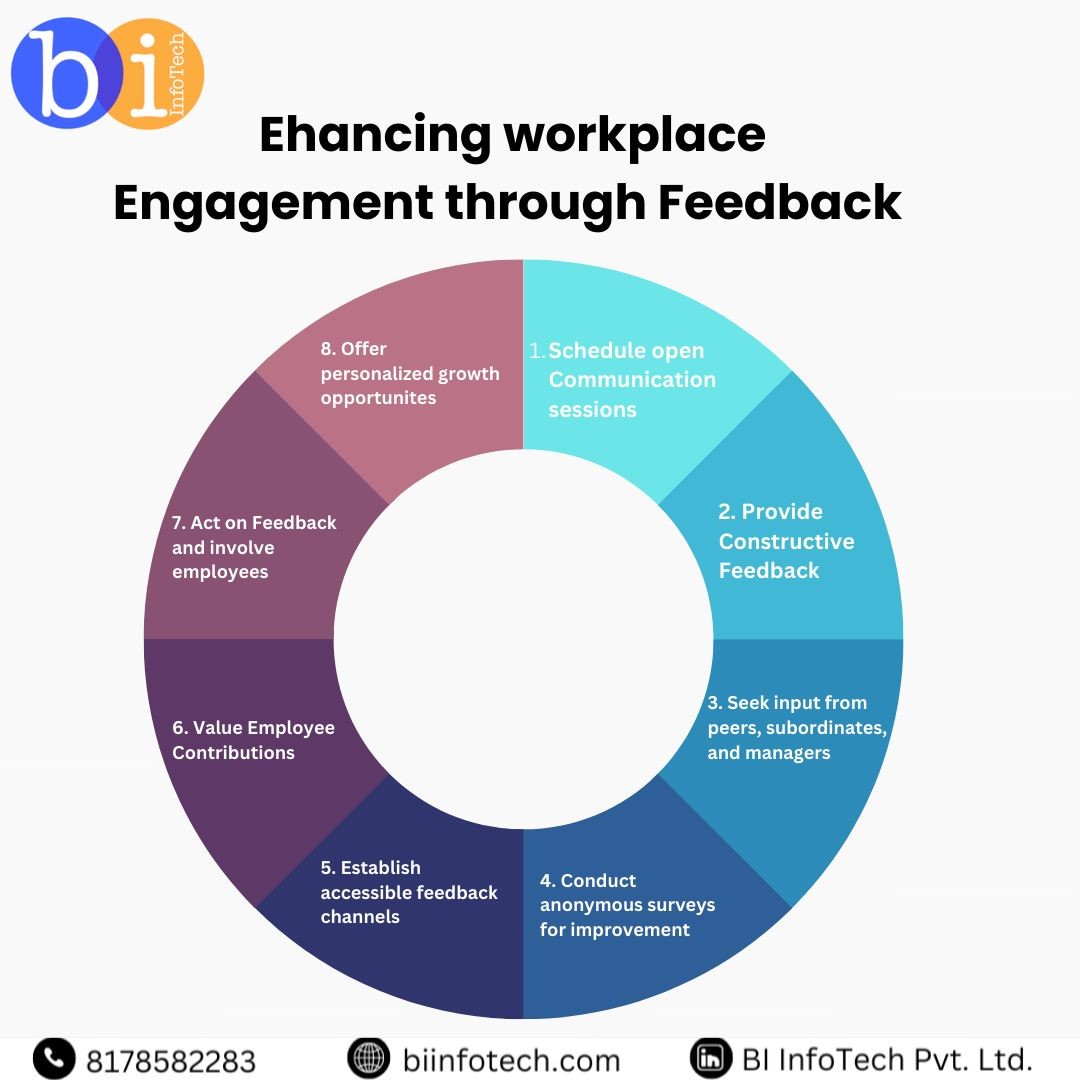In today's fast-paced work environment, fostering workplace engagement is crucial for organizational success. One of the most effective ways to achieve this is through the implementation of constructive feedback mechanisms. By providing a platform for open communication and continuous improvement, constructive feedback not only enhances employee morale but also contributes to the overall growth and productivity of the organization. Let's delve into how organizations can leverage constructive feedback to enhance workplace engagement:
Schedule Open Communication Sessions: Regularly scheduled open communication sessions provide employees with the opportunity to voice their opinions, concerns, and suggestions in a safe and inclusive environment. These sessions encourage transparency and trust, fostering a culture of open dialogue within the organization.
Provide Constructive Feedback: Constructive feedback is essential for employee development and growth. Managers should focus on providing feedback that is specific, actionable, and aimed at helping employees improve their performance. By highlighting strengths and areas for improvement, constructive feedback enables employees to reach their full potential.
Seek Inputs from Peers, Subordinates, and Managers: Embracing a 360-degree feedback approach allows organizations to gather insights from all levels within the company. Seeking inputs from peers, subordinates, and managers provides a comprehensive understanding of employee performance and fosters a culture of collaboration and mutual respect.
Conduct Surveys for Improvement: Regularly conducting surveys to gather feedback on workplace engagement and satisfaction levels is key to identifying areas for improvement. These surveys enable organizations to gather valuable insights from employees and take proactive measures to address any issues or concerns raised.
Establish Accessible Feedback Channels: Establishing accessible feedback channels, such as suggestion boxes, anonymous feedback forms, or digital platforms, ensures that employees feel comfortable sharing their feedback. Creating multiple channels for feedback encourages participation and ensures that all voices are heard.
Value Employee Contributions: Recognizing and valuing employee contributions is essential for building a positive work culture. By acknowledging their efforts and achievements, organizations demonstrate appreciation for employee contributions, fostering a sense of belonging and loyalty among employees.
Act on Feedback: Taking actionable steps to address feedback demonstrates a commitment to employee well-being and organizational improvement. Organizations should prioritize addressing feedback in a timely manner and communicate the actions taken to address employee concerns, thereby building trust and credibility.
Offer Personal Growth: Providing opportunities for personal and professional growth through training, mentorship programs, and career development initiatives is essential for employee engagement and retention. Investing in employee growth not only enhances their skills and competencies but also reinforces their commitment to the organization.
In conclusion, constructive feedback plays a pivotal role in fostering workplace engagement and driving organizational success. By implementing strategies such as scheduling open communication sessions, providing constructive feedback, seeking inputs from all levels, conducting surveys, establishing accessible feedback channels, valuing employee contributions, acting on feedback, and offering personal growth opportunities, organizations can create a positive and inclusive work environment where employees feel valued, motivated, and engaged.

